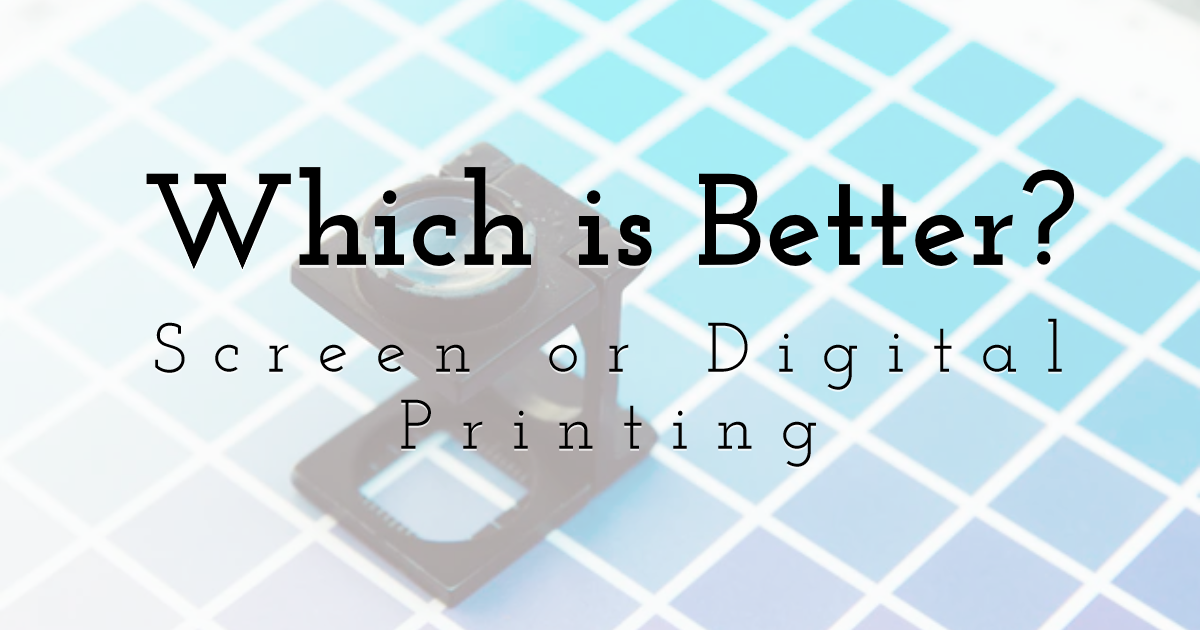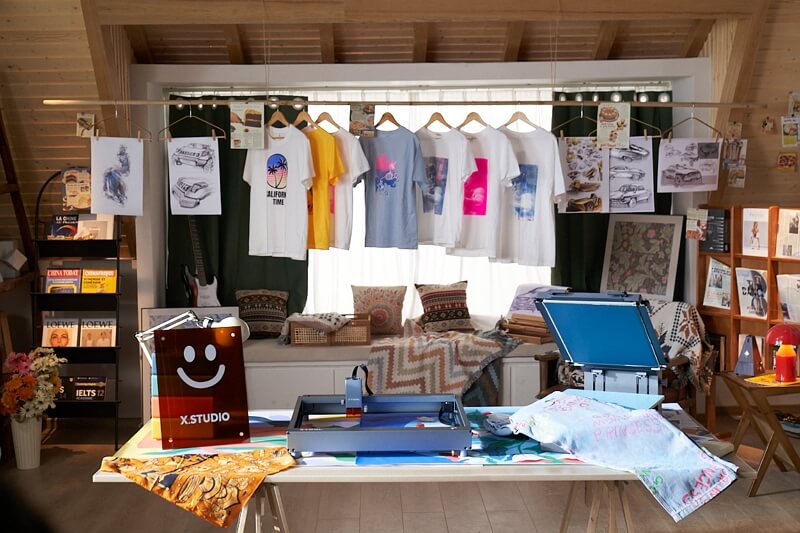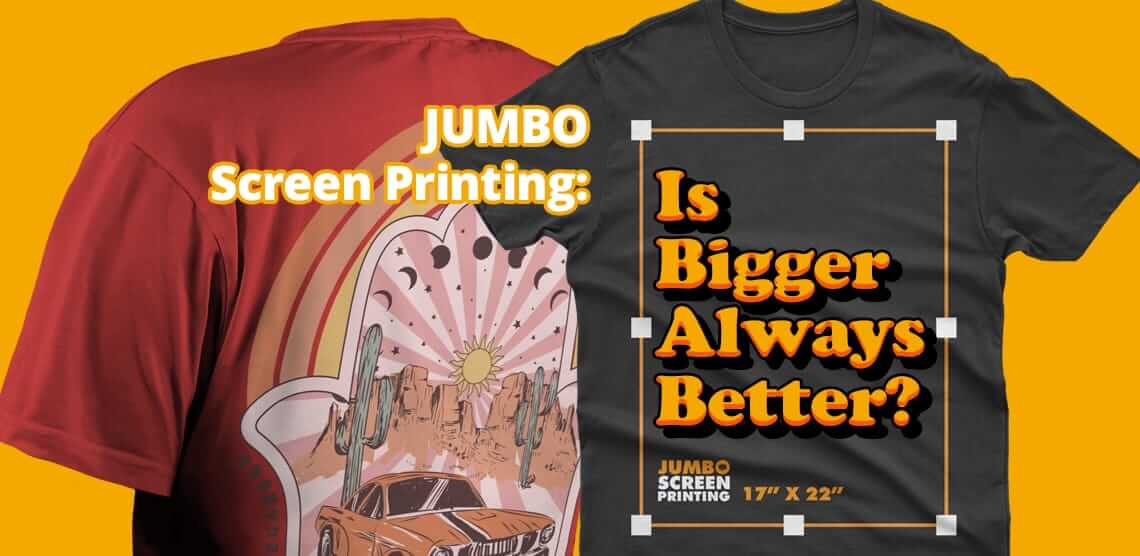Tx Tees Things To Know Before You Get This
Tx Tees Things To Know Before You Get This
Blog Article
The Best Guide To Tx Tees
Table of ContentsTx Tees - TruthsThe Facts About Tx Tees UncoveredThe Only Guide to Tx TeesThings about Tx TeesThe 8-Second Trick For Tx TeesIndicators on Tx Tees You Need To KnowHow Tx Tees can Save You Time, Stress, and Money.
Include up other expenses, like the number of utilities it takes to run the shop and the price of ink and emulsion per layout. Take the print below.The emulsion ought to only be a couple of cents given that you 'd just need to coat one display for this task. Exactly how much should you charge per tee shirt to make an earnings? Usually, printers attempt to make up to 45% earnings on a print job. Here's a table to help you identify that: overall expense per product percent of preferred revenue as a decimal (instance:.25 or.45) revenue made per product per task Currently allowed's discuss the profitability of DTF.

With DTF, you can print a handful of tee shirts, or just one. Both display printing and DTF have their niches in the globe.
See This Report on Tx Tees
The best means to recognize? Ask around and see what printing shop like yours are doing. custom monograming. Try both out and see which you like better
When you're selecting what kind of printing technique to utilize for publishing your art work styles on your garments, it is essential that you recognize the differences between these two techniques so you can optimize outcomes while decreasing prices. Display printing is one of the most frequently made use of method for publishing styles on textiles.
DTG printing is also known as spot or direct to garment printing because it publishes just what is required as opposed to making a screen as screen printers do. https://nu3nuz2pecb.typeform.com/to/lj3z1iI9. Display printing works by display filler squeegee display printing ink screen mesh display, then transferring the photo to garment utilizing warmth and/or pressure
The DTG printer makes use of special dye-sublimation inks that are applied right into a pre-designed image by a digital printing system. The inks come to be component of the fabric, allowing for vibrant colors and remarkable information. It's also called area or straight to garment printing since it publishes just what is needed instead of making a display as display printers do.
Not known Facts About Tx Tees
Initially, it's much quicker - you can publish a fullcolor photo in minutes, rather than hours for screen printing. Second, there's no established time or expenses involved - you can print any kind of layout you such as, without having to create a screen first. Third, there's no waste - due to the fact that screen printers display print one design at a time, they need to evaluate each shade independently.
The paper is really costly and can just be utilized as soon as. Once it's printed on, it has to be discarded. - The initial acquisition rate is reduced than the in advance investment of DTG printers- You can print multi-color layouts one display each time rather than having to publish each shade individually like DTG printing.

The Definitive Guide for Tx Tees
Rather of using screen mesh as screen printers do, dye sublimation printers utilize laser modern technology to move your images onto garments or paper. A warm process moves the dye from its solid-state directly right into the gas stage which in turn fuses it onto material substratums when they are quickly warmed to heats under high pressure.
Sublimation printing is environment-friendly. It makes use of much less water than screenprinting, and due to the fact that it does not involve making use of hazardous solvents, it's secure for all kinds of clothing. The color sublimation inks are also odor-free when cured, unlike screen printers that use damaging chemicals throughout the display printing process that leave behind an unpleasant odor.
They also save money on costly tools like direct exposure devices given that color sublimation printers do not need a UV exposure system or a flash cure stove that is commonly used in screen printing (custom screen printing). What is straight to garment printing (DTG Printing)? DTG printing is an electronic screenprinting process that prints straight onto textile utilizing specialized inkjet printers
The 9-Second Trick For Tx Tees
DTG printing provides many advantages over conventional screenprinting, consisting of the capability to print photo quality photos, higher shade vibrancy, and the capability to publish styles on darker textiles. DTG printers work by warming the textile ink till it develops into a gas. The gas then penetrates the fabric, bonding with the fibers to develop a long-term print.

Display printers merely prepare their display then start publishing till they lack product or ink.- There is a variety of experienced look what i found display printers around the world, which can be useful for beginners. - It's a slower procedure - display printers typically have to await the ink to completely dry before they can publish the following color- Screen printers call for hands-on labor, so there's a higher understanding contour and it takes longer to produce a high-grade layout- Display printing isn't as precise as DTG printing, so you might obtain some "bleeding" of shades from one part of the photo onto one more if not done effectively.
The smart Trick of Tx Tees That Nobody is Discussing
Nevertheless, as opposed to using display mesh as display printers do, dye sublimation printers utilize laser technology to transfer your images onto garments or paper. A heat procedure moves the color from its solid-state directly into the gas stage which in turn integrates it onto fabric substrates when they are swiftly warmed to heats under high stress.
Sublimation printing is eco-friendly. It utilizes much less water than screenprinting, and due to the fact that it doesn't include making use of harmful solvents, it's risk-free for all sorts of garments. The color sublimation inks are also odor free when treated, unlike display printers that make use of harmful chemicals during the display printing process that leave behind an unpleasant odor.
They likewise conserve cash on pricey tools like direct exposure units since dye sublimation printers don't require a UV exposure system or a flash remedy oven that is normally made use of in display printing. What is straight to garment printing (DTG Printing)? DTG printing is an electronic screenprinting procedure that publishes straight onto textile making use of specialized inkjet printers.
A Biased View of Tx Tees
DTG printing provides many benefits over typical screenprinting, consisting of the capability to print photo top quality pictures, greater shade vibrancy, and the capability to print layouts on darker textiles. DTG printers work by heating the fabric ink up until it becomes a gas. The gas then permeates the textile, bonding with the fibers to produce a permanent print.
Report this page